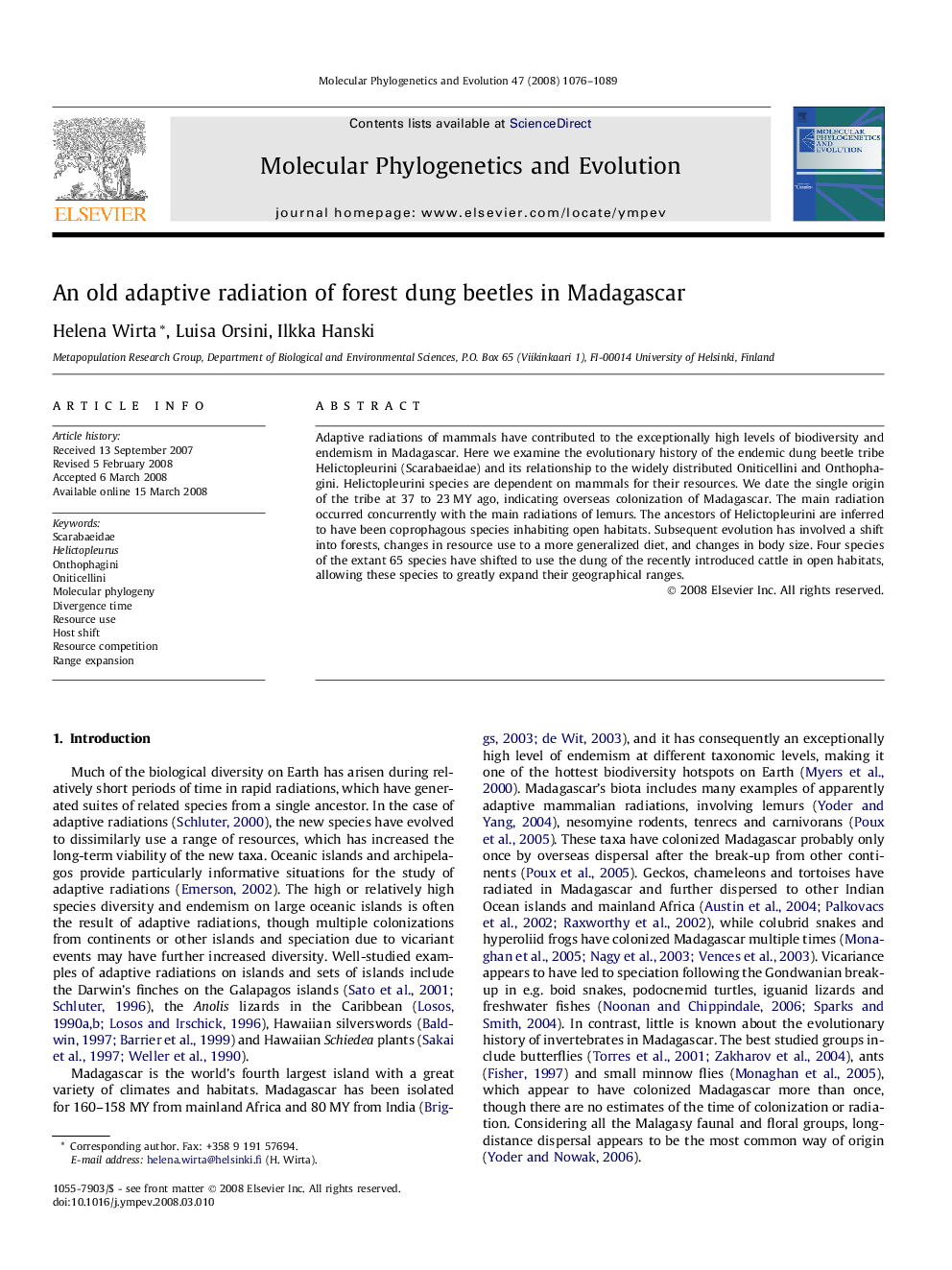| Article ID | Journal | Published Year | Pages | File Type |
|---|---|---|---|---|
| 2835303 | Molecular Phylogenetics and Evolution | 2008 | 14 Pages |
Adaptive radiations of mammals have contributed to the exceptionally high levels of biodiversity and endemism in Madagascar. Here we examine the evolutionary history of the endemic dung beetle tribe Helictopleurini (Scarabaeidae) and its relationship to the widely distributed Oniticellini and Onthophagini. Helictopleurini species are dependent on mammals for their resources. We date the single origin of the tribe at 37 to 23 MY ago, indicating overseas colonization of Madagascar. The main radiation occurred concurrently with the main radiations of lemurs. The ancestors of Helictopleurini are inferred to have been coprophagous species inhabiting open habitats. Subsequent evolution has involved a shift into forests, changes in resource use to a more generalized diet, and changes in body size. Four species of the extant 65 species have shifted to use the dung of the recently introduced cattle in open habitats, allowing these species to greatly expand their geographical ranges.
